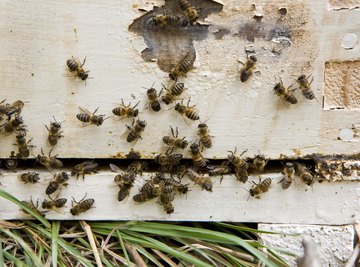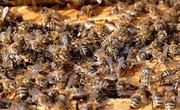
Beekeeping, also known as apiculture, is incredibly important to the agricultural success of the planet. Bees provide crucial pollination to numerous native species as well as to agriculturally important crops. Researchers have identified over 20,000 different bee species across the globe, with 4,000 different native species in the United States. The most popular apiculture species is the western honey bee (Apis mellifera).
In beekeeping, bee hives don't always prosper and thrive. Various diseases and pests can cause the collapse of a colony of bees. When that occurs, beekeepers can clean the hive and reuse it for another colony of bees. However, they must take special precautions when cleaning to prevent disease.
When Should You Clean a Bee Hive?
Bees typically do a pretty great job keeping their home clean and tidy. However, beekeepers sometimes encounter hives that have been abandoned or colonies where the bees have all died off.
Some of the most common reasons for a honeybee hive to die out include:
- Colony collapse disorder
- Wax moths in hive
- Various mites in hive
- Small hive beetles
- Bacterial, fungal or viral infections
Beekeepers can reuse these hives for future colonies, but it's important for them to make sure they clean and sanitize them properly. Proper cleaning can prevent whatever killed the previous hive from causing problems for the new residents. If the hive is not cleaned properly, bacteria, fungus, mites and other pests can continue to infect the newly-introduced bees.
How to Clean Bee Hives
Please remember that only a trained adult should clean beehives. The proper cleaning process requires the use of boiling water, which can be dangerous and cause burns when used improperly.
Things You'll Need
- Protective gear - clothing, gloves, goggles, etc.
- Large freezer (if possible)
- Flat scraper to remove wax and debris
- Soda ash/washing soda (not to be confused with baking soda)
- Large soaking tub
- Large cooling tub
- Rope/string to lower frames into hot water
The beekeeper should begin by removing each frame from the beehive. They should remove as much remaining wax as possible, taking care to burn all removed debris if the hive had a confirmed disease or infestation. After removing the majority of the wax, the beekeeper then uses a scraper to remove any remaining residue. This process is also repeated with the interior of the frame of the hive as well.
During this process, special care should be taken with the corners of the frames. Mites and other pests can wedge themselves into crevices and any debris present could help protect them from the cleaning process.
Prior to sterilizing the frames in a washing soda solution, beekeepers often take the cleaned frames and place them in a large freezer, such as a chest freezer. Freezing temperatures effectively kill many pests that infest hives, such as mites and wax moths. This reduces the likelihood of reinfection.
Using a concentration of one pound of washing soda (sodium carbonate) to one gallon of water, create enough solution to fill your soaking tub. To thoroughly destroy any bacteria, fungus, virus or other contaminants, the solution should be brought to boiling before pouring in the tub.
Beekeepers should use extreme caution during this step. Utilizing protective eyewear, waterproof and heat-resistant gloves and protective clothing is advisable.
Once the solution is ready and heated, the beekeeper then dips each frame into the solution using a rope or string. They fully submerge the frame for a period of one or two minutes before removing the frame and placing it somewhere it can dry fully. This process is repeated until each frame has been sanitized and dried, then the beekeeper reassembles the freshly cleaned and sanitized hive.
Once cleaned and dry, the hive is ready to have a new colony introduced and begin producing honey once again!
References
- United States Geological Survey: How Many Species of Native Bees are in the United States?
- University of Arkansas Division of Agriculture: About Honey Bees - Types, Races and Anatomy
- The Food & Environment Research Agency: Hive Cleaning and Sterilization
- University of Arkansas Division of Agriculture: Honey Bee Parasites, Hive Pests and Bee Diseases
About the Author
Marina Somma is a freelance writer and animal trainer. She holds a B.A. in Psychology and a B.S. in Marine and Environmental Biology & Policy from Monmouth University. Marina has worked with a number of publications involving animal science, behavior and training, including animals.net, SmallDogsAcademy and more.
Photo Credits
Jupiterimages/BananaStock/Getty Images
